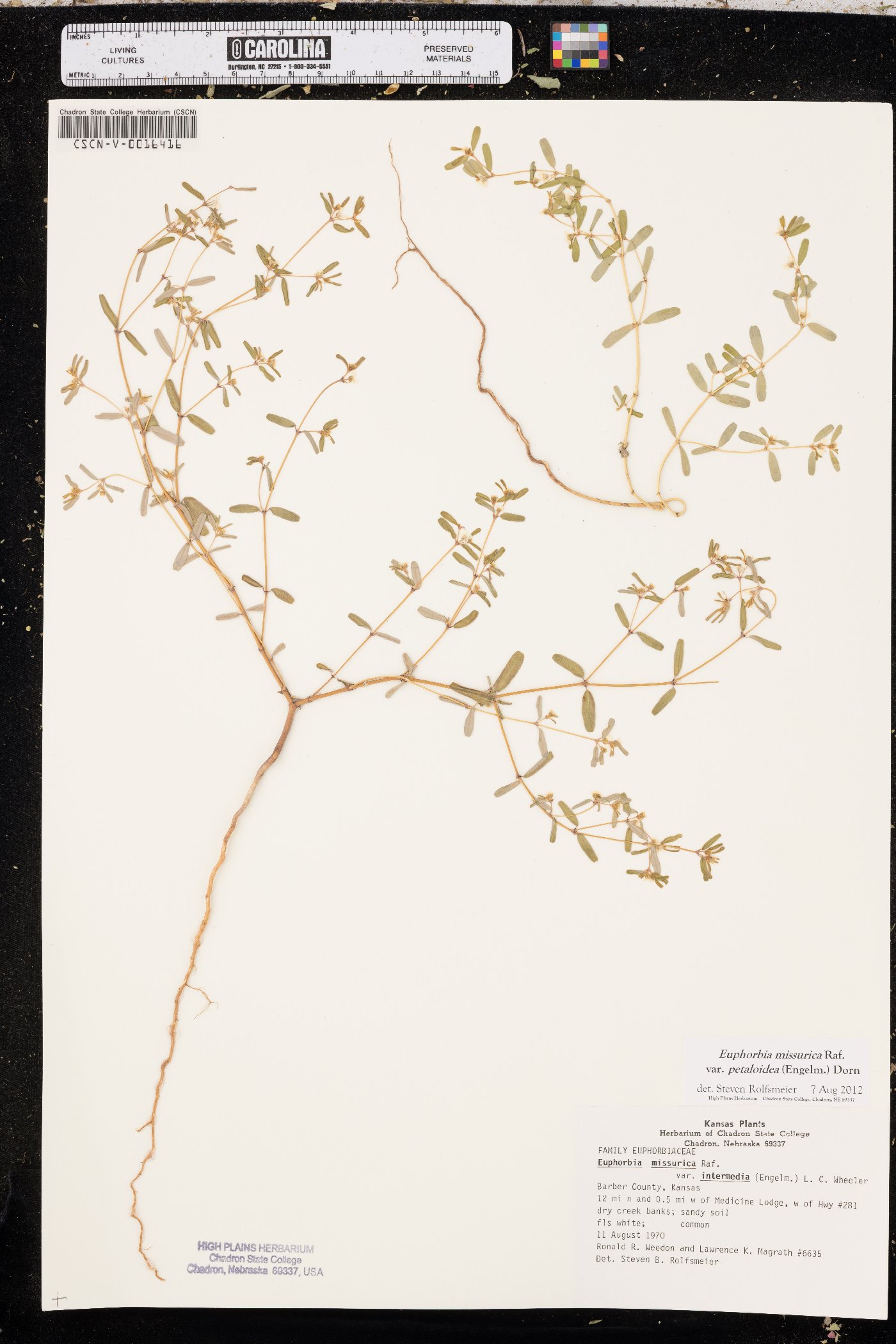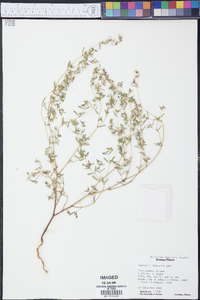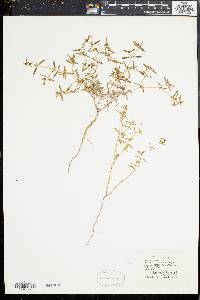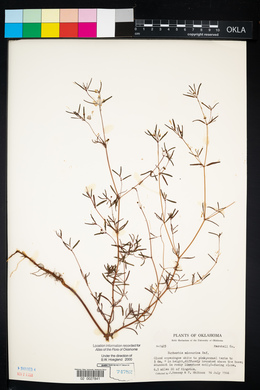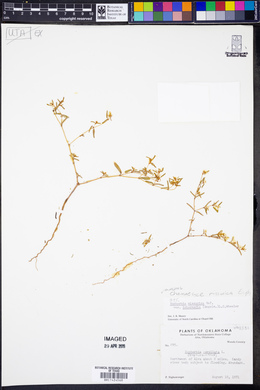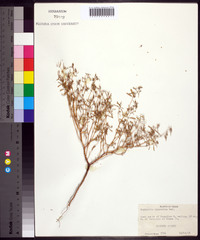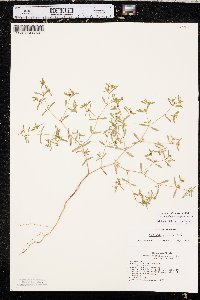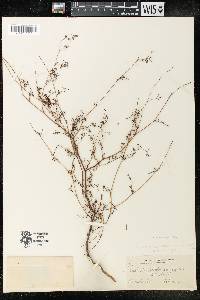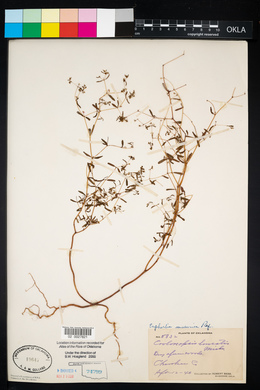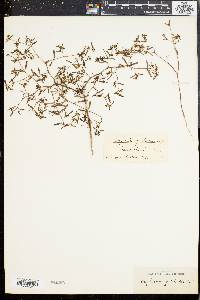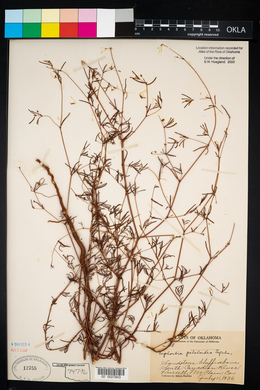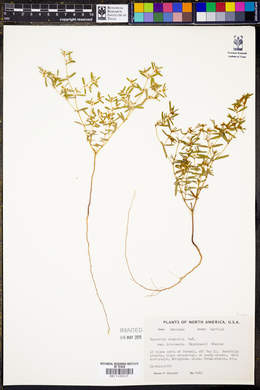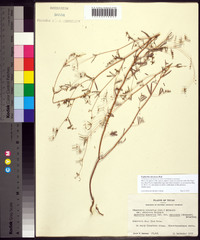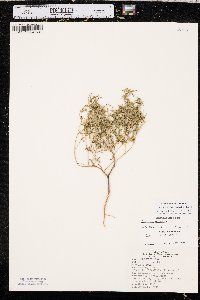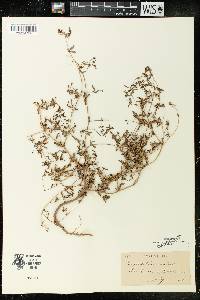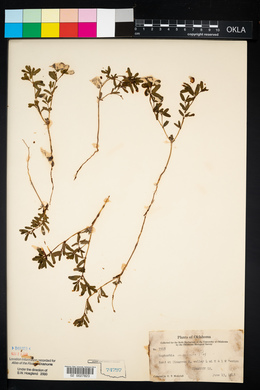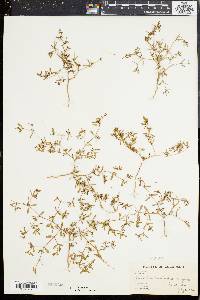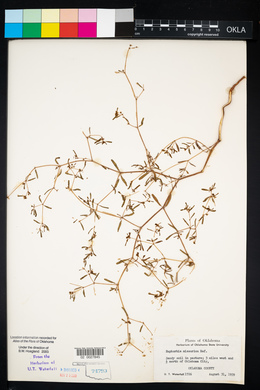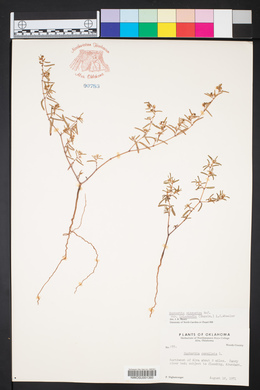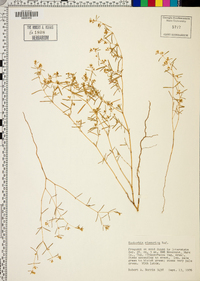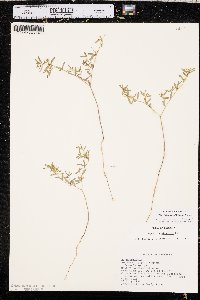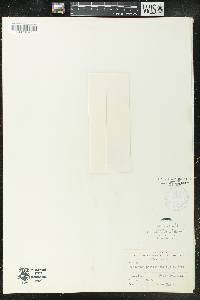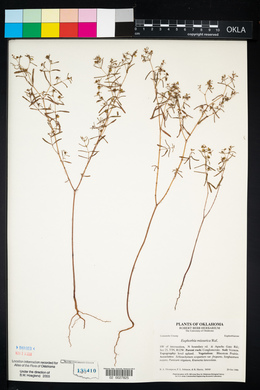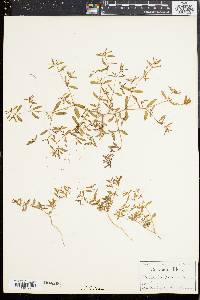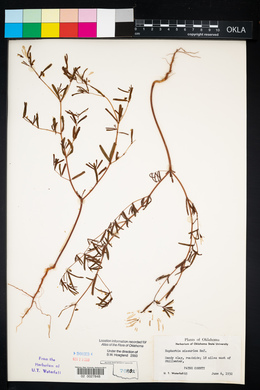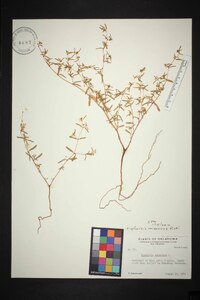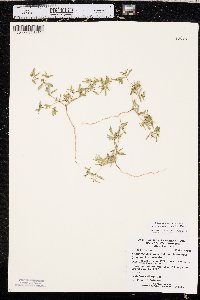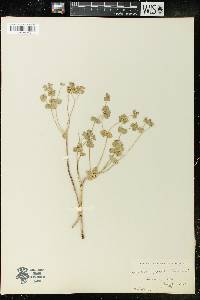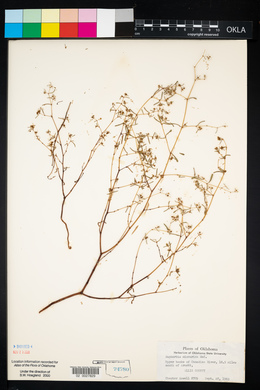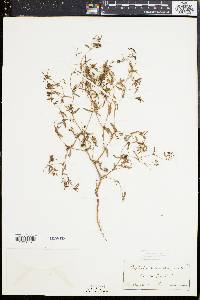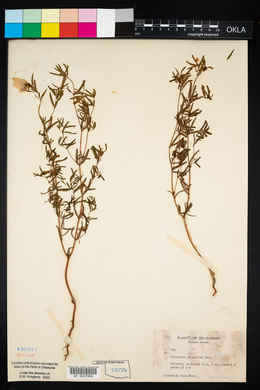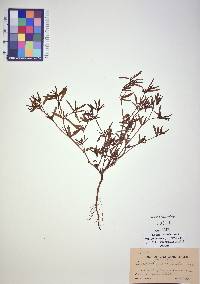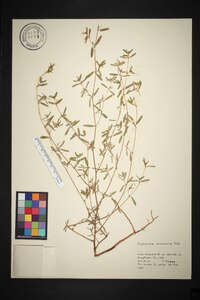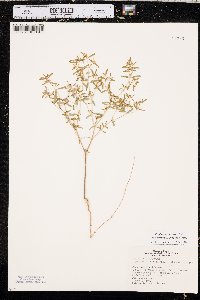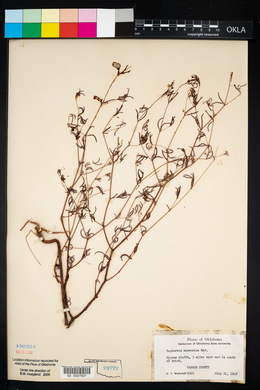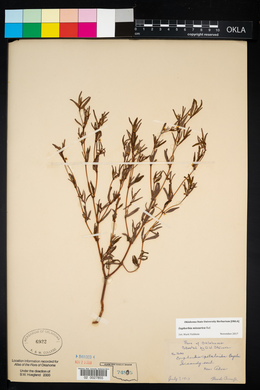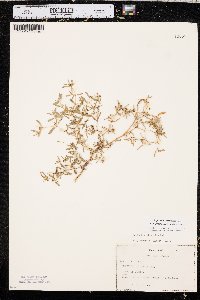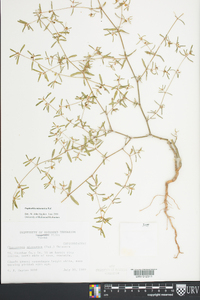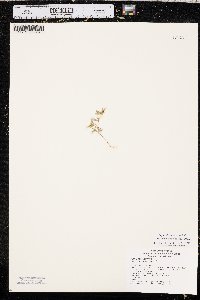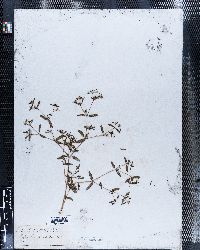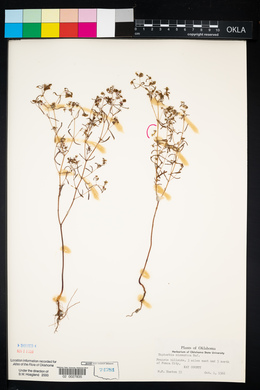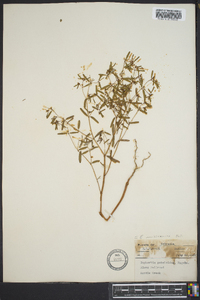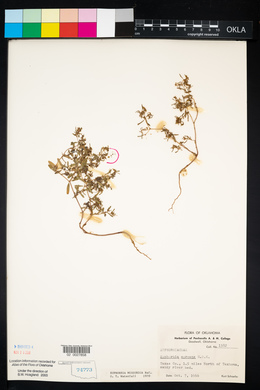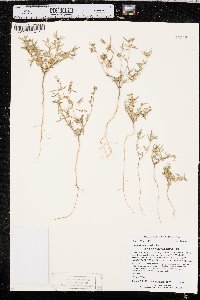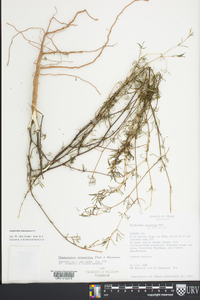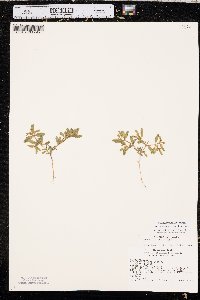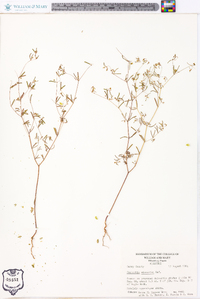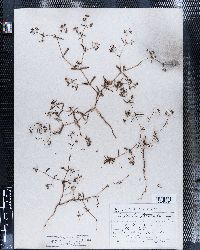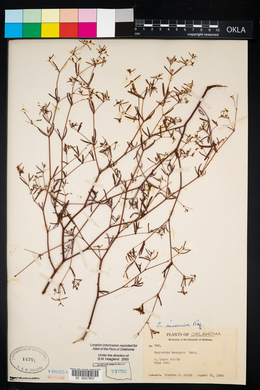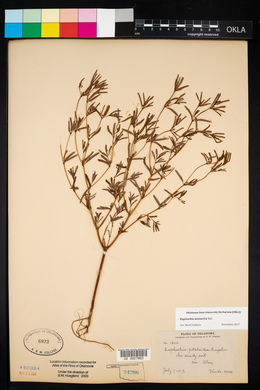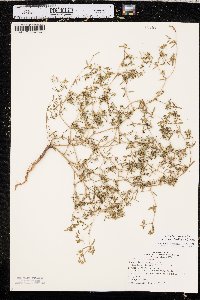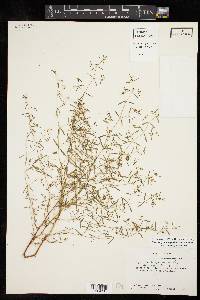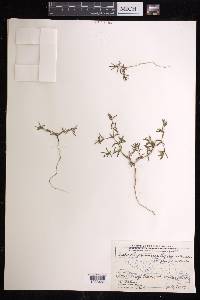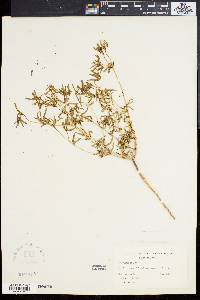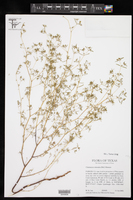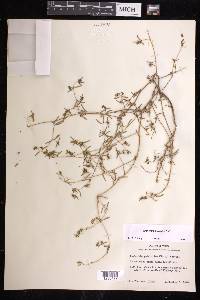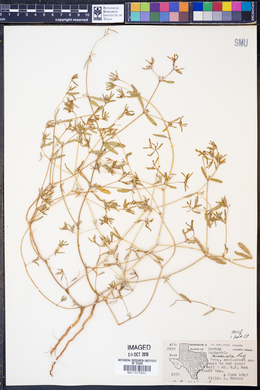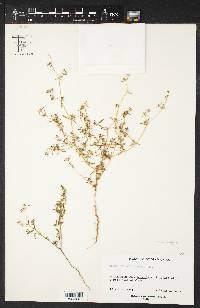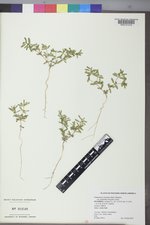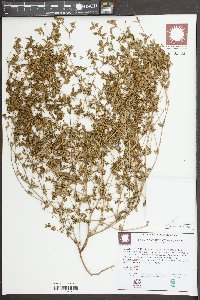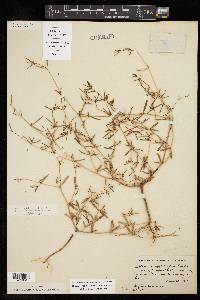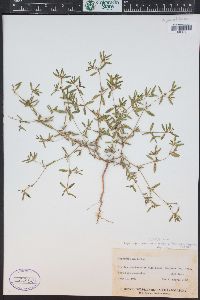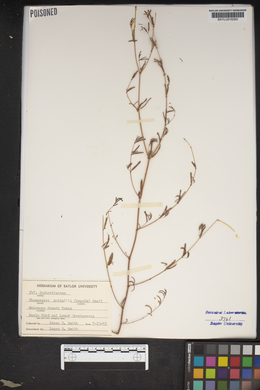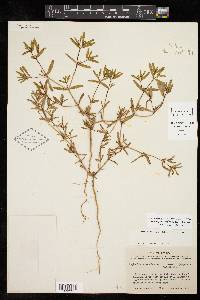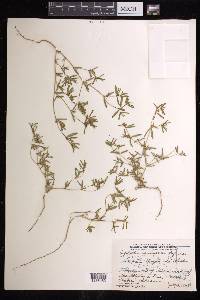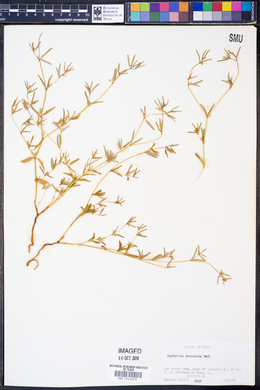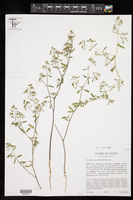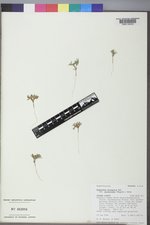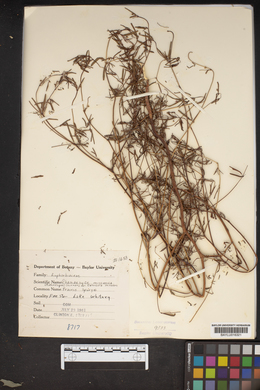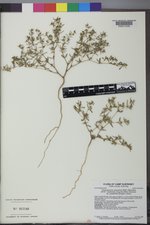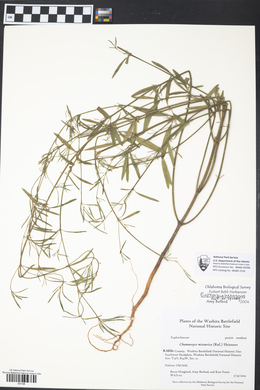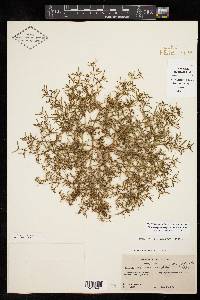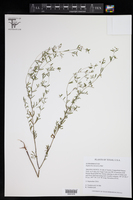Chamaesyce missurica
|
|
|
|
Family: Euphorbiaceae
prairie sandmat, more...Prairie Sandmat, prairie spurge
[Chamaesyce missurica var. calcicola Shinners, moreChamaesyce missurica var. petaloidea (Engelm.) Dorn, Chamaesyce nuttallii (Engelm.) Small, Chamaesyce petaloidea (Engelm.) Small, Chamaesyce zygophylloides Small, Euphorbia missurica Raf., Euphorbia missurica var. intermedia (Engelm.) L.C.Wheeler, Euphorbia missurica var. petaloidea (Engelm.) R.D.Dorn, Euphorbia nuttallii (Engelm.) Small, Euphorbia petaloidea Engelm.] |
FNA 2016, Allred and Ivey 2012, Correll and Johnston 1970 Duration: Annual Nativity: Native Lifeform: Forb/Herb General: Annual herbs, 20-60 cm tall (rarely up to 1 m tall), from a taproot; stems several, erect or ascending; herbage glabrous and sometimes glaucous. Leaves: Opposite along the stems, on short petioles 1-3 mm long; blade linear to narrowly oblong, 4-30 mm long and 3-7 mm wide, the wider leaves with noticably asymmetric bases; margins entire; leaf underside lighter green than the upper surface; stipules 1 mm long, usually distinct but occasionally united at the base on one or both sides of stem, deeply and irregularly fringed or lobed. Flowers: Has the highly modified flower structure characteristic of Euphorbias. Structures called cyathia appear to be individual flowers, but are composed of fused-together bracts forming a cup (involucre), with peripheral nectary glands which are often subtended by petal-like bracts called petaloid appendages. Within the cup there is a ring of inconspicuous male flowers, each reduced to a single stamen. Out of the middle protrudes a single, stalked female flower which lacks petals. In E. missurica, the cyathia (flower structures) are solitary or clustered in leaf axils near branch tips; Involucres are broadly bell-shaped, 1.5 mm high, and glabrous, with 4 yellowish-green cup-shaped glands around the edge, each with a white to pinkish petaloid appendage; 24-60 staminate flowers. Fruits: Capsules ovoid-globose and 3-celled, 2 mm high, glabrous; containing 3 mottled-whitish to brown, ovoid-triangular seeds, 2 mm high, bluntly 3-angled in cross section, smooth or slightly wrinkled. Ecology: Found in glades, on ledges, bluff tops (usually calcareous), dry upland forest margins, and sandy or disturbed areas, below 5,000 ft (1524 m); flowers June-November. Distribution: c US, from MT to MN, south to NM, TX, and AR. Notes: This species belongs to the Chamaesyce subgenus of Euphorbia. Some treatments, even recent ones, continue to treat Chamaesyce as a separate genus even though molecular evidence places it within Euphorbia. Chamaesyce spp are distinct based on their leaves which are always opposite and and often have asymmetric bases; cyathia (flower structures) in leaf axils, not at branch tips, and usually with petaloid appendages; and stipules present and not gland-like. E. missurica is distinguished by being a glabrous (hairless) annual with an upright growth form sometimes over half a meter tall (many annual Chamaesyces are prostrate and mat-forming); oblong leaves 4-30 mm long and more than three times as long as wide, with smooth (entire) edges; seed pods 2-3 mm high; and cyathia (flower-like structures) with white petaloid appendages that are larger than the glands they are attached to. Euphorbia missurica is similar to the western E. parryi but has a more upright growth habit and more conspicuous petaloid appendages. It is wise to make a collection whenever ID to species is needed, as Chamaesyces are difficult to identify in the field, and multiple species of the genus will commonly grow side-by-side. Ethnobotany: Unknown Etymology: Euphorbia is named for Euphorbus, Greek physician of Juba II, King of Mauretania; missurica means from missouri. Editor: AHazelton 2017 Glabrous annual; stems decumbent to suberect, 1-6 dm, repeatedly forked; lvs linear to oblong, 1-3 cm, entire, obtuse to rounded or retuse; appendages ovate to oblong, conspicuous, more than twice as long as the glands; stamens 29-48 per involucre; fr strongly 3-lobed, 2-2.5 mm; seeds not compressed, smooth, roundly 3-angled, mottled white and brown, 1.5-2 mm. Rocky or sandy soil; Minn. to Mont., s. to Mo., Tex., and N.M. Summer. Var. missurica (E. zygophylloides; Chamaesyce z.; C. nuttallii), with scarcely angled seeds, capillary smaller branches, and capillary peduncles to 11 mm, occurs from Mo. to Tex. Var. intermedia (Engelm.) L. C. Wheeler (E. petaloidea; Chamaesyce p.) with definitely angled seeds, and stouter branches and peduncles, the latter to 4 mm, occurs from Minn. to Mont. and Tex. Gleason, Henry A. & Cronquist, Arthur J. 1991. Manual of vascular plants of northeastern United States and adjacent Canada. lxxv + 910 pp. ©The New York Botanical Garden. All rights reserved. Used by permission. |

